Bolshaya Neva Estuary, Saint Petersburg
While the tugboats were taking our ferry away from the dock, the wind fanned the clouds, the sun came out, and the surrounding picture immediately turned from gloomy gray to colorful. Now the tugboats are guiding our ferry along the Galley Fairway, skirting the Blueflush Shoal. Ahead of the course is the mouth of the Bolshaya Neva, on the left bank of which the Admiralty shipyards are located. The building with a large white gate is an assembly and assembly shop, where the hulls of ships or their individual sections are assembled.
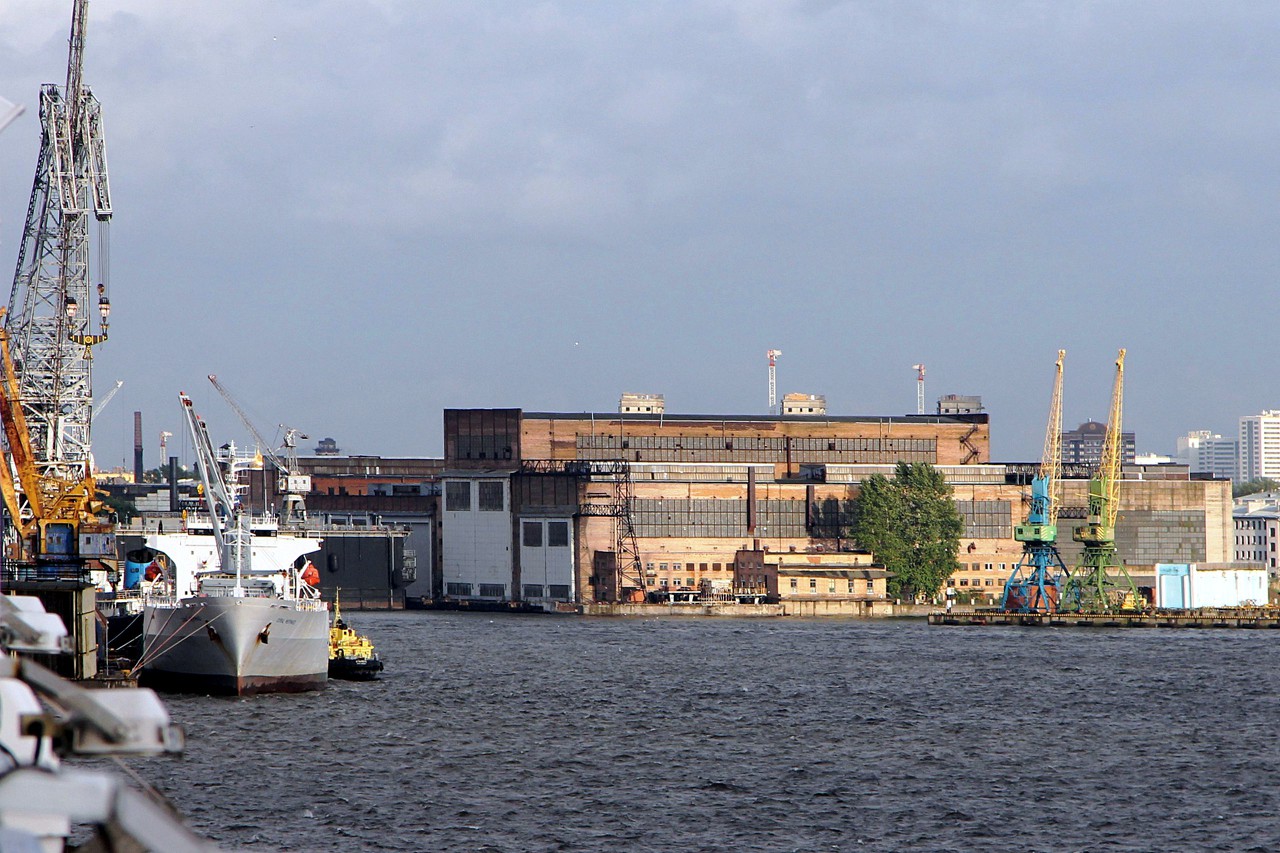
On the right are the lifting cranes of the Baltiysky extension wall of the Baltiysky Plant, famous for building nuclear icebreakers.

A floating crane with a lifting capacity of 350 tons with a lifting height of up to 50 meters. The total height of the boom is 76 meters. The crane was ordered in 1939 from the German company "Demag", in 1940 the pontoon with a rotary mechanism was towed to Leningrad. However, the Germans delayed the delivery of the lifting boom under various pretexts until the beginning of the war. After the war, the arrow was manufactured at the Baltic Plant.
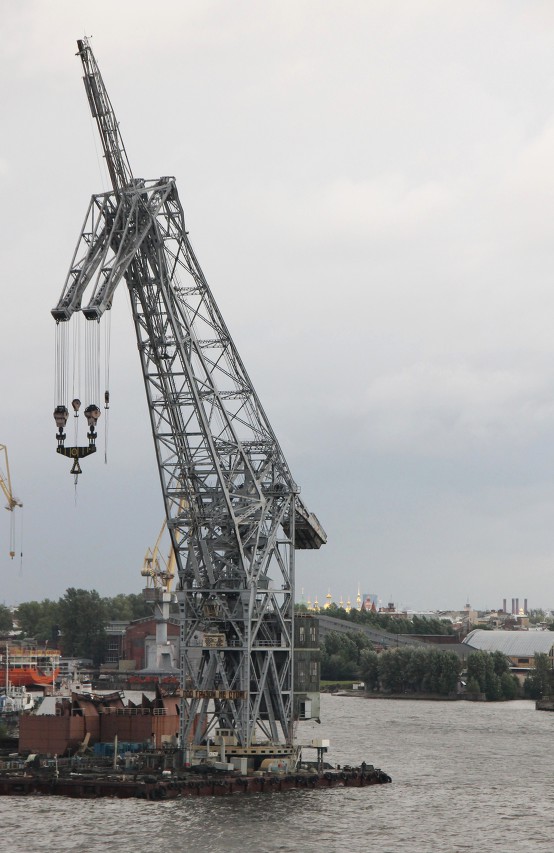
To the right of the Admiralty Shipyard across the Ekateringofka Channel is Gutevsky Island, where the First Port District is located. A complex of old industrial buildings made of red brick with pipes - Guteyevsky state alcohol cleaning plant, built in 1902. When the Bolsheviks came to power in 1917, they shut down the production facility, but a year later it started working again. In the late 20s, academician S. V. Lebedev developed a technology for producing artificial rubber from alcohol, and the Leningrad Experimental Plant of Artificial Rubber was formed on the basis of the distillery.
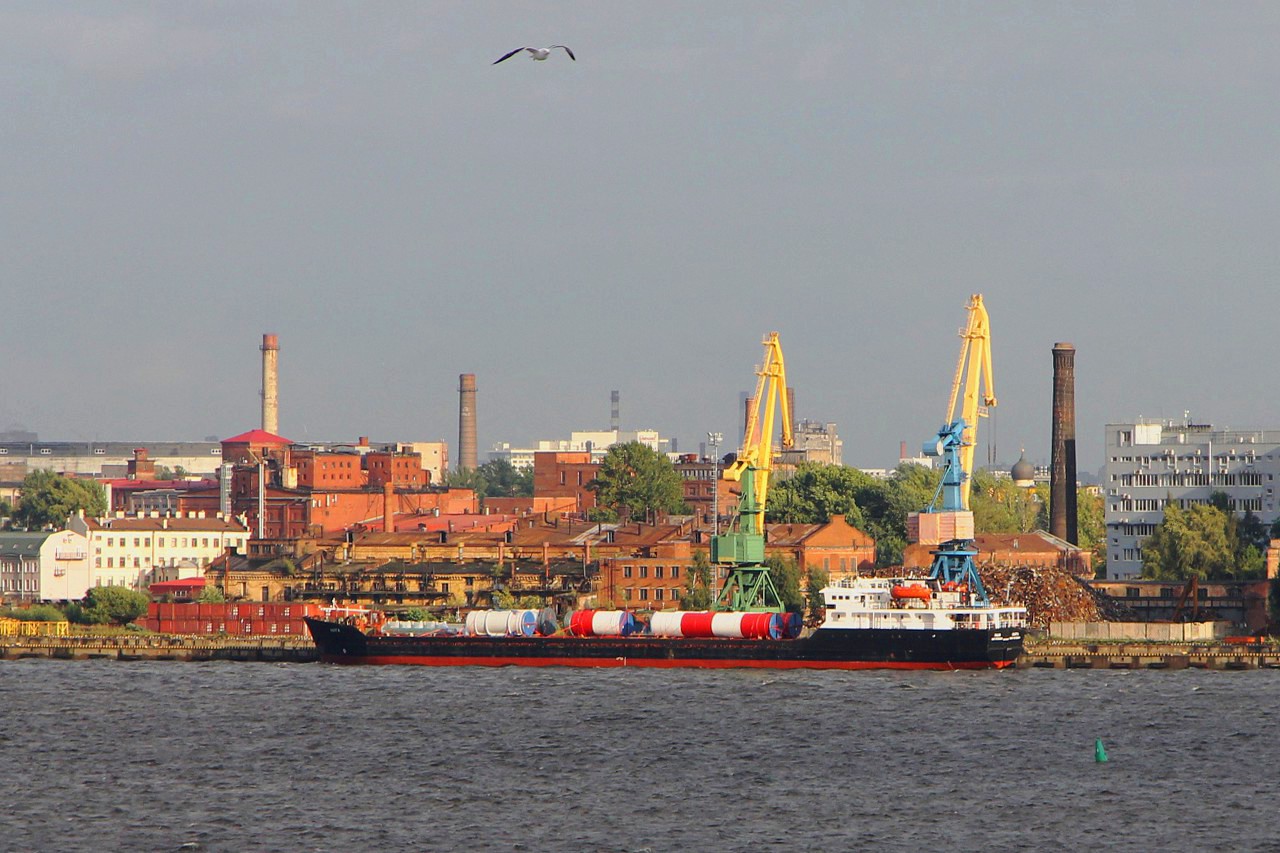
Modern transport and logistics complex of SVT company.
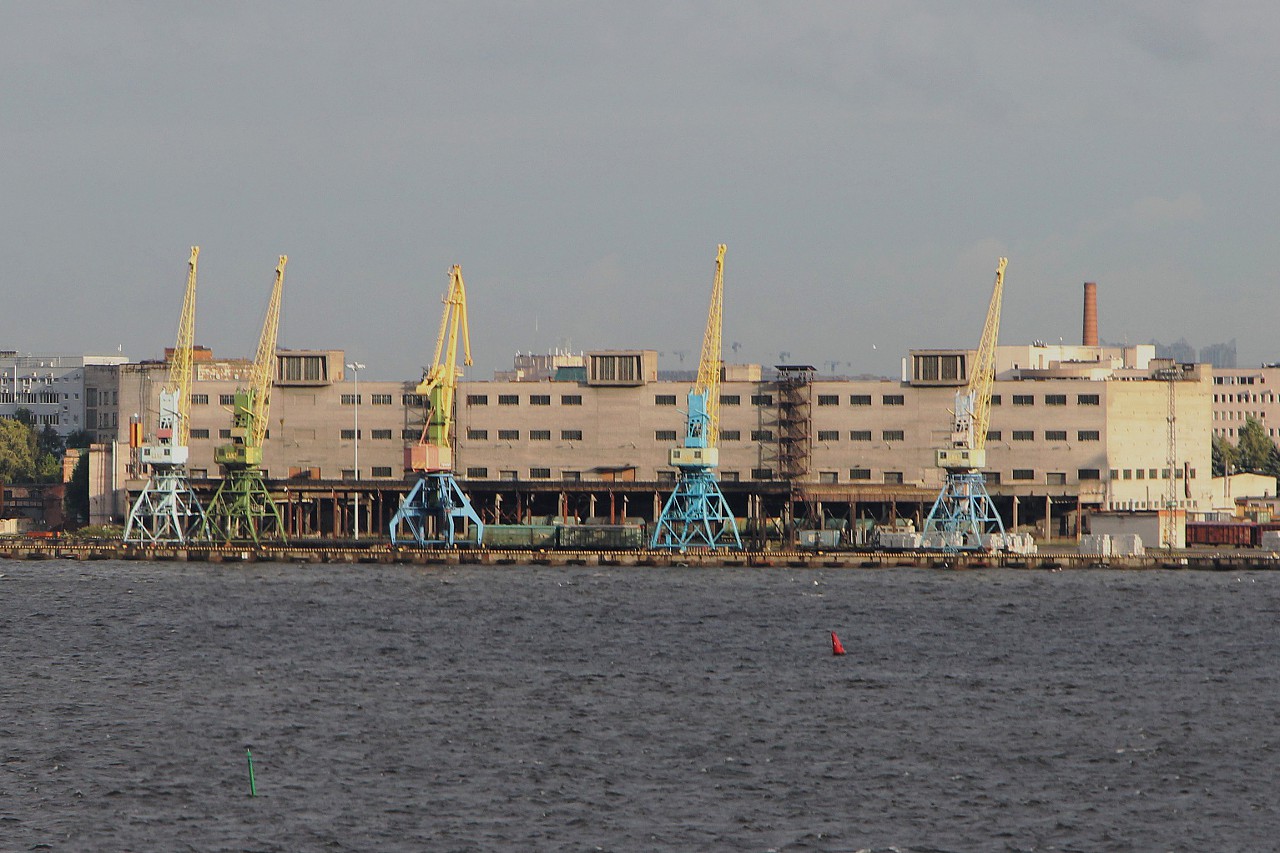
White Building-LenMorNIIproekt, is the oldest marine design institution in Russia, it originates from the Temporary Commission for the Construction of Commercial Ports, founded in 1885. On the left, the golden dome of the Guteevskaya Church of the Epiphany, opened in 1899, glitters.
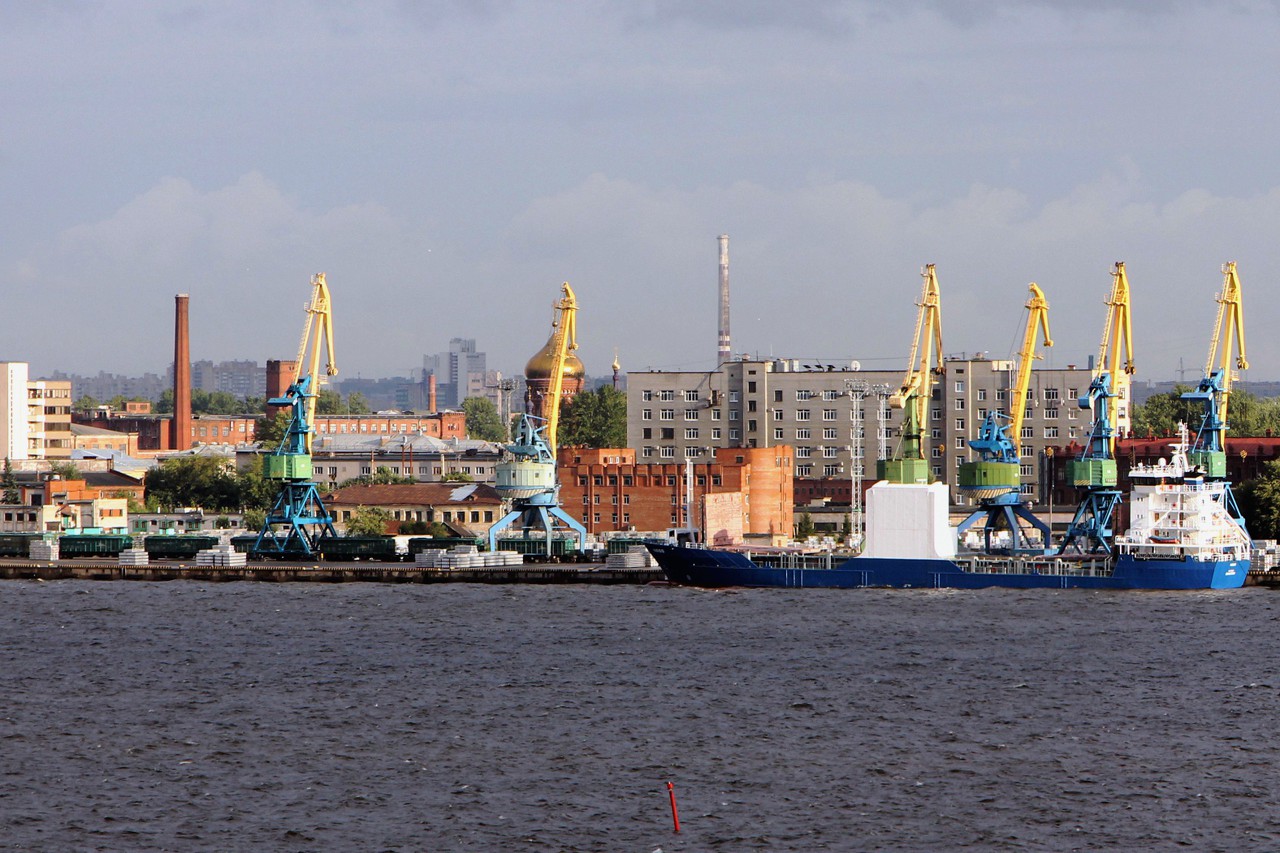
The former administrative building of the Baltic Shipping Company was built in the 80s, now it is occupied by the office complex "Baltic Sea Center". In the foreground is a two-story Portoflot building.
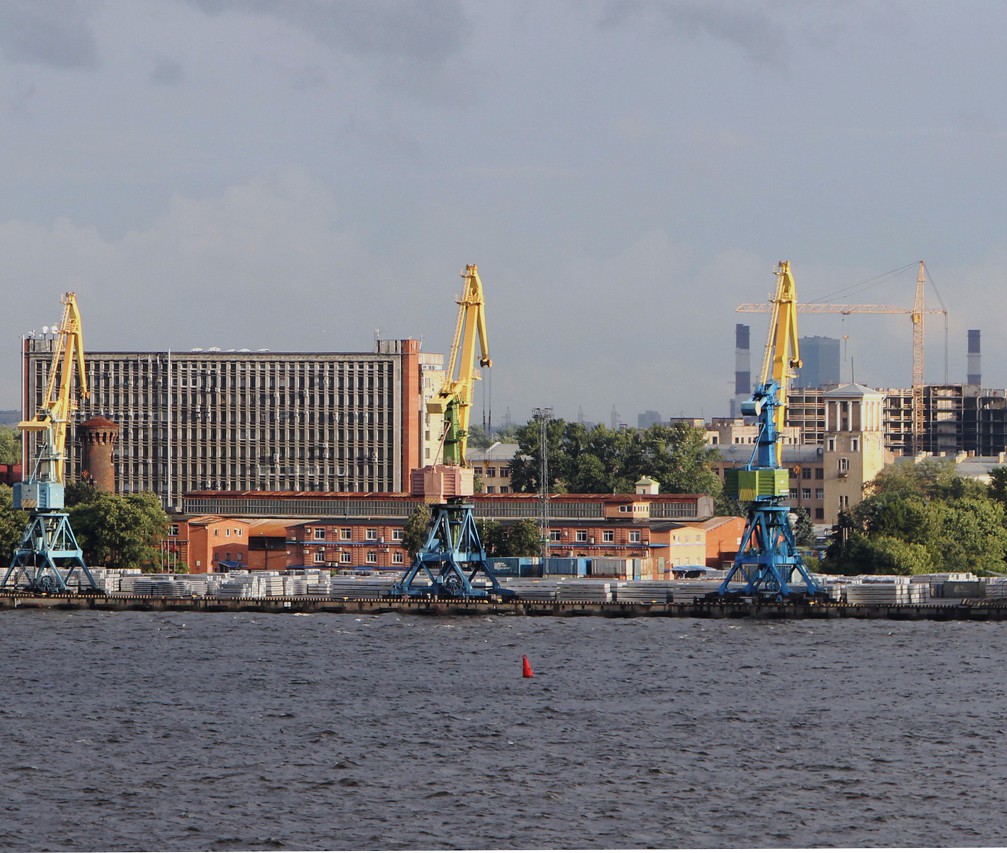
Berths and warehouses of the First district of the port.
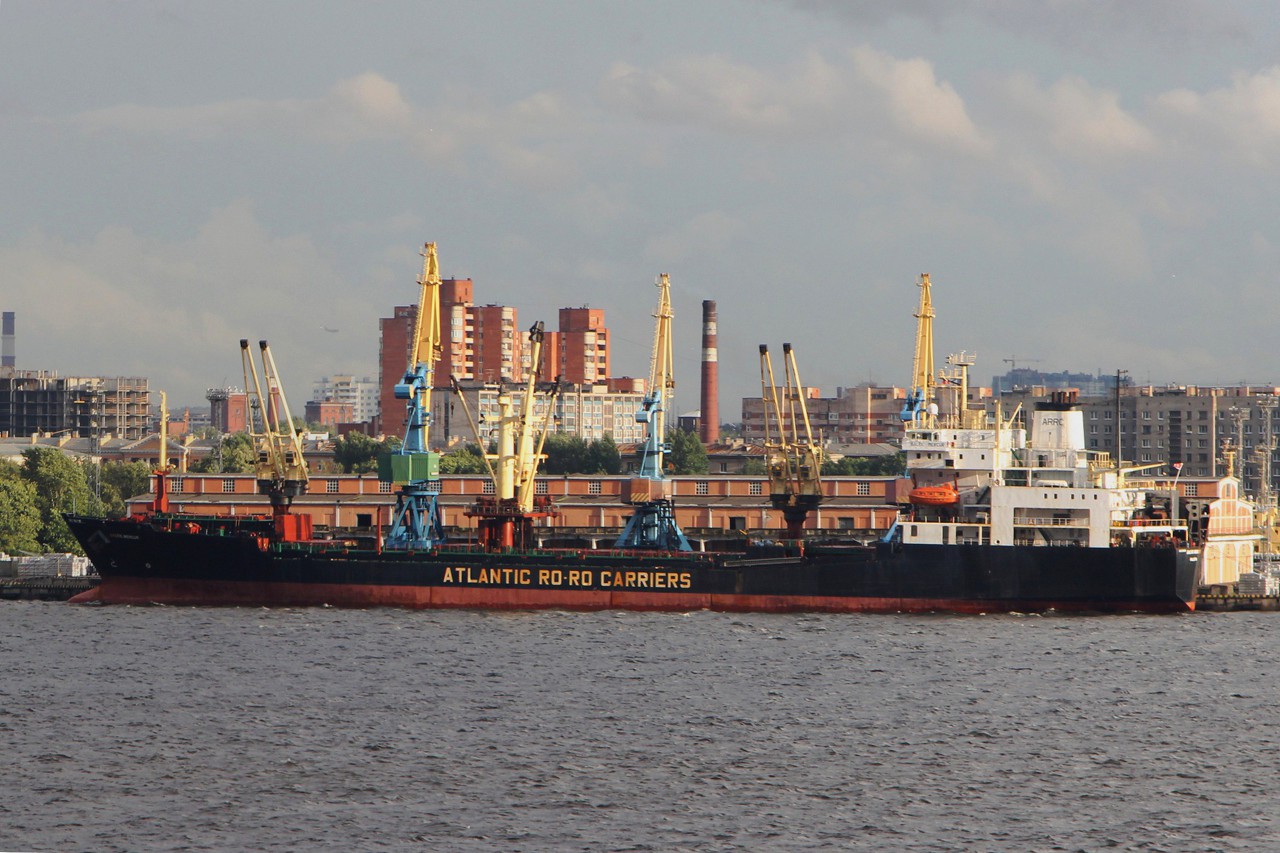
Guteyevsky bucket.
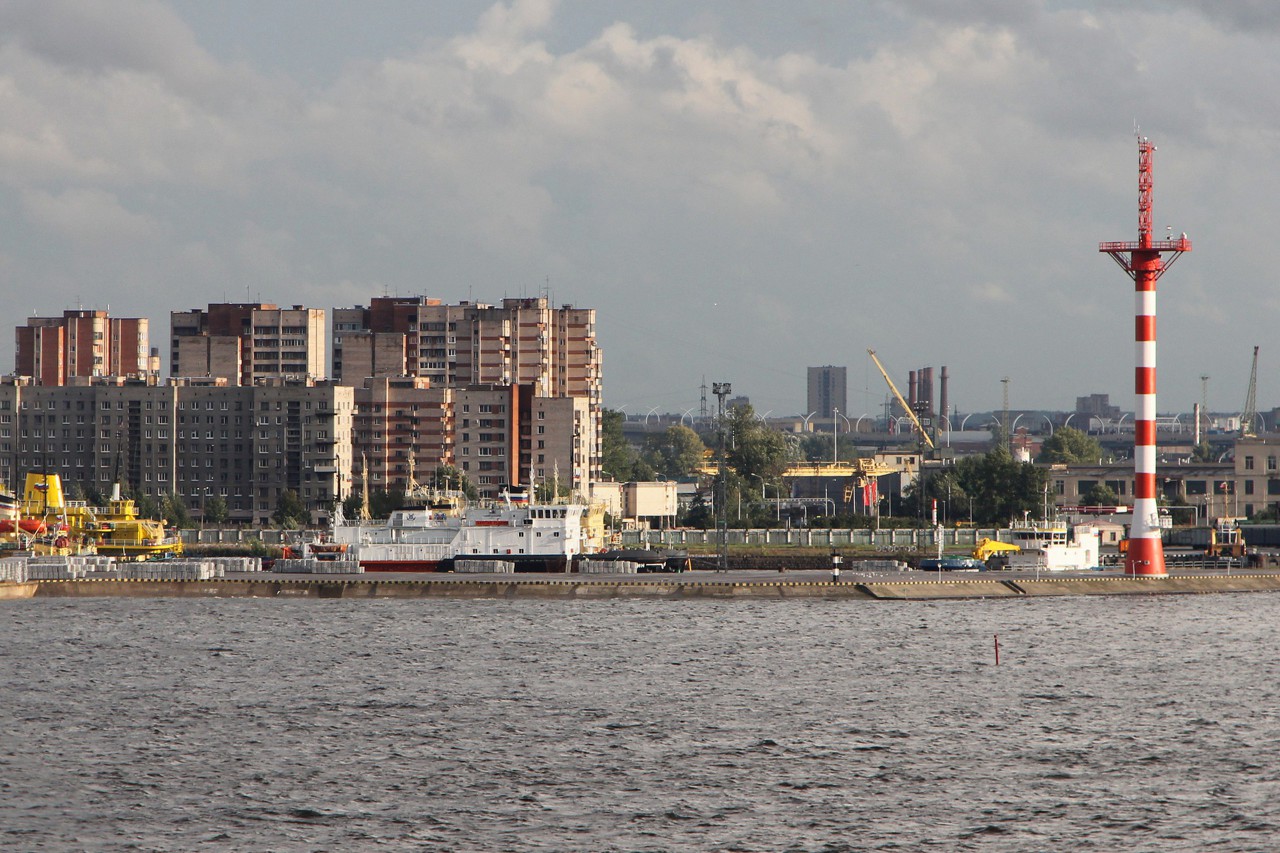
The entrance to the Sea Channel with the tower of the Nevsky Vorota radar post, where, in fact, the tugs lead us.
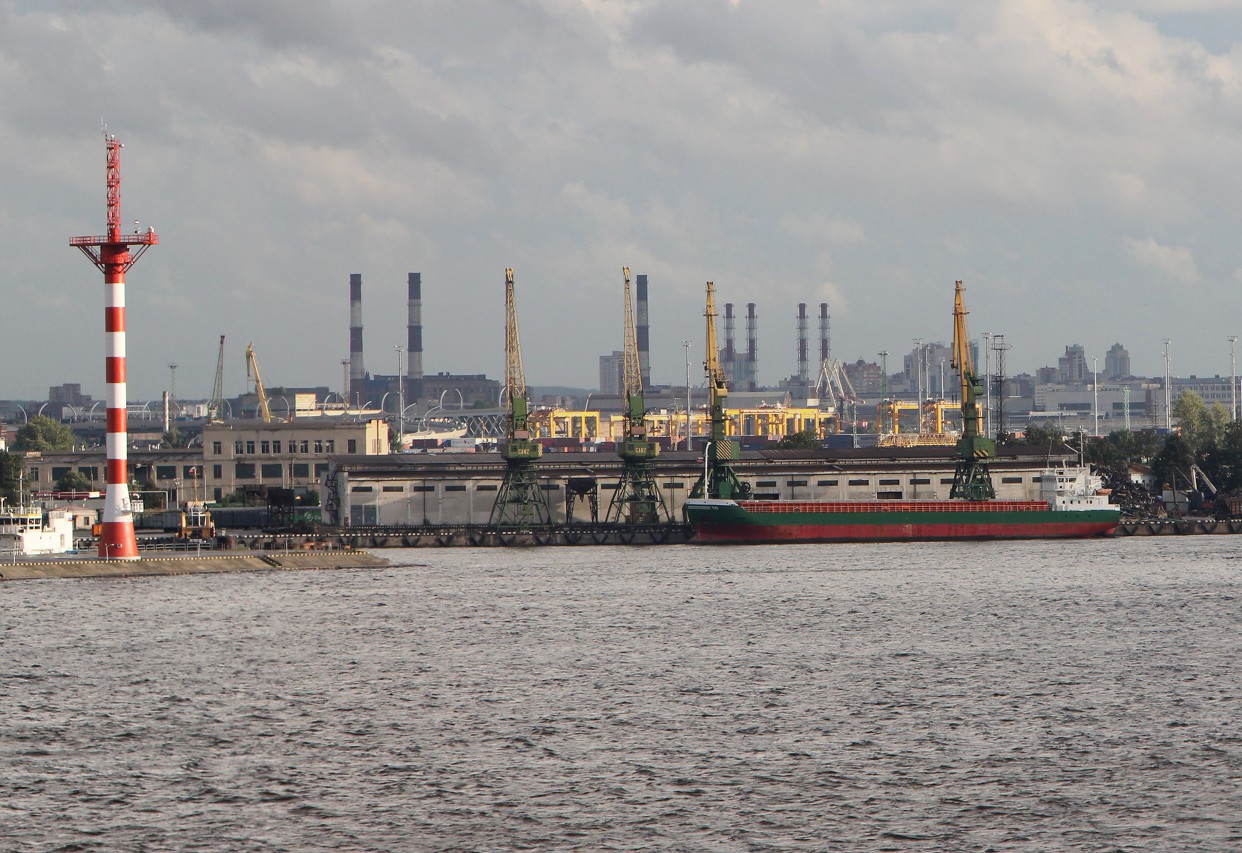
The northern tip of Kanonersky Island, where the Gunboat Repair Plant is located.
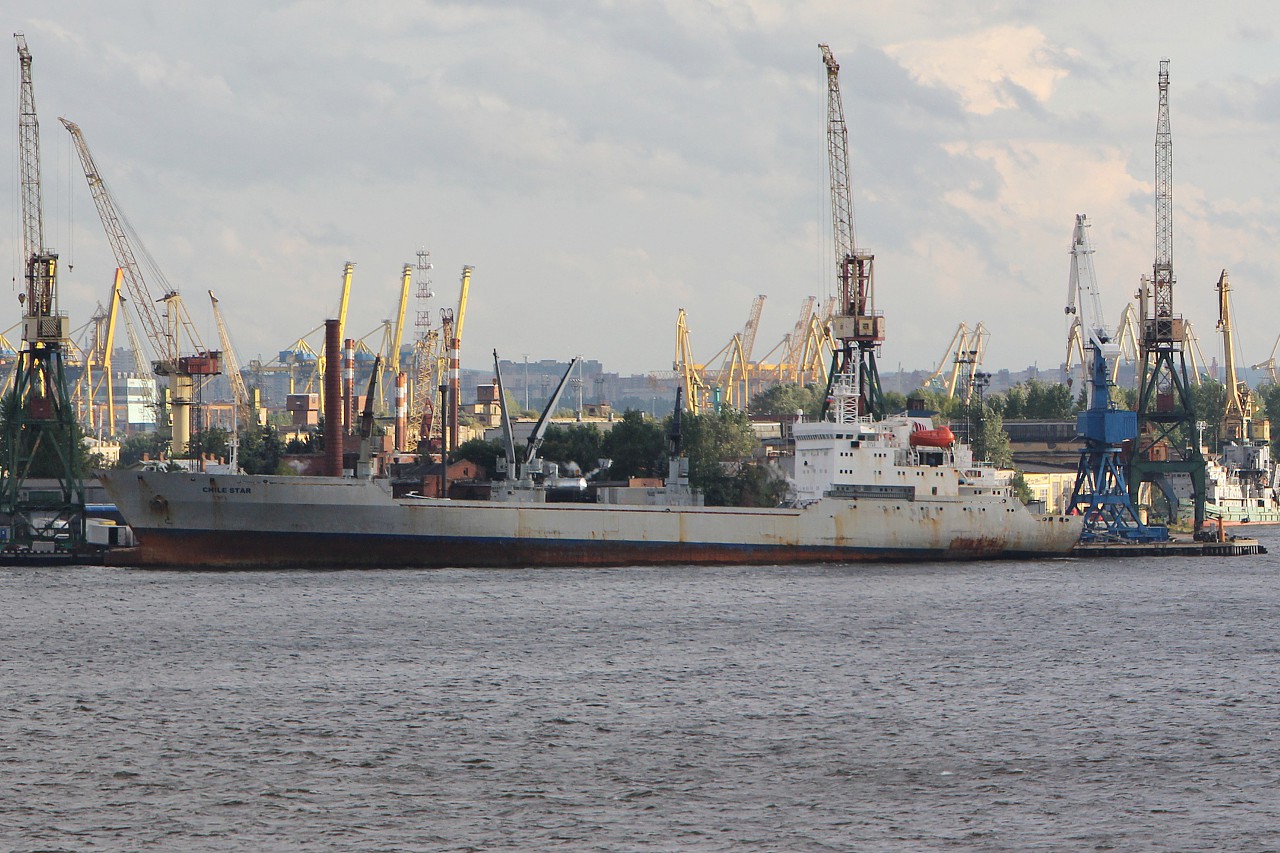
Floating dock No. 5.

White Island. The treatment facilities of the Vodokanal's Central Aeration Station are located here.
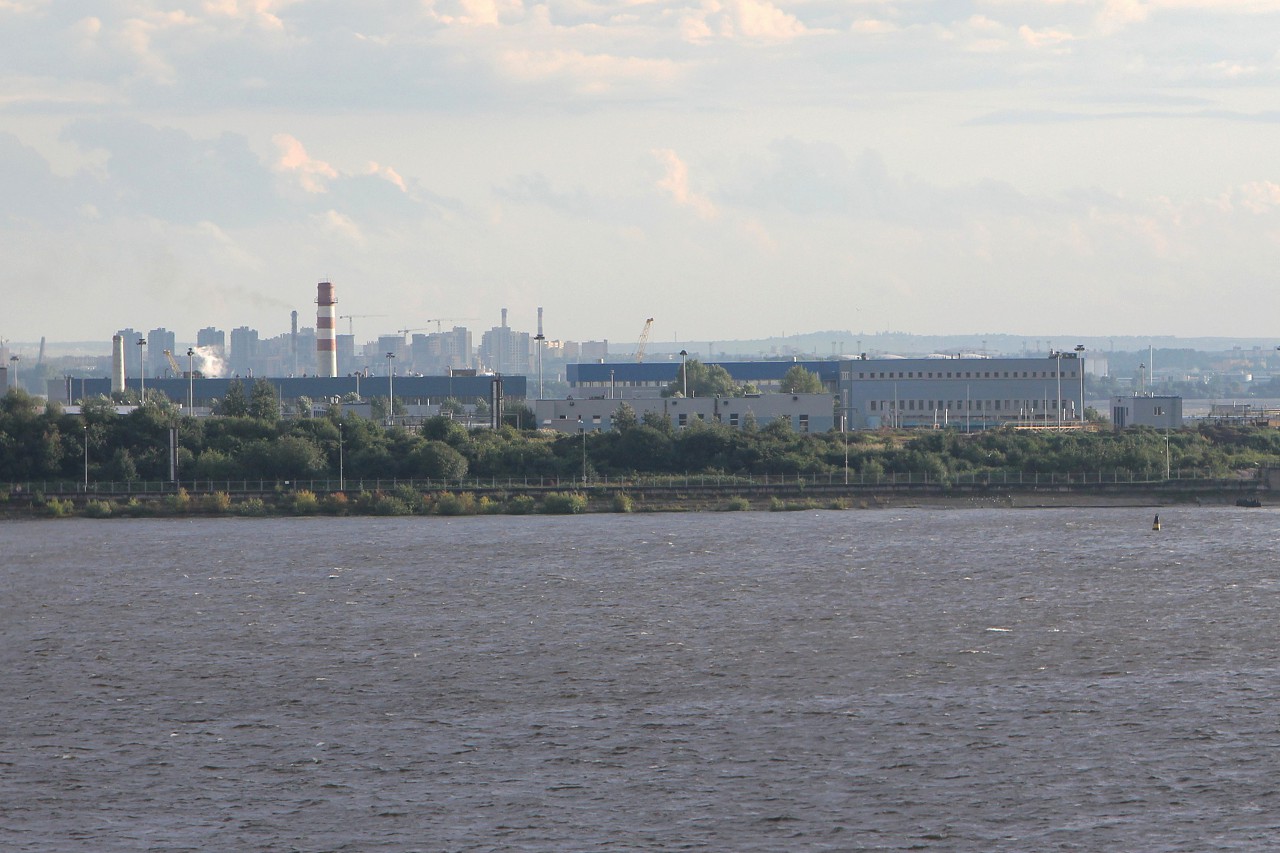
Beyond Bely Island, you can see the Gunboat Spit, an artificial embankment that protects the entrance to the Sea Channel from the Neva Bay.

Ship's fairway, which is used only by small vessels after the construction of the Sea Channel. Here they hammer piles for the bridge, which will pass the highway of the Western high-speed diameter. At the time of writing, the bridge has already been put into operation.
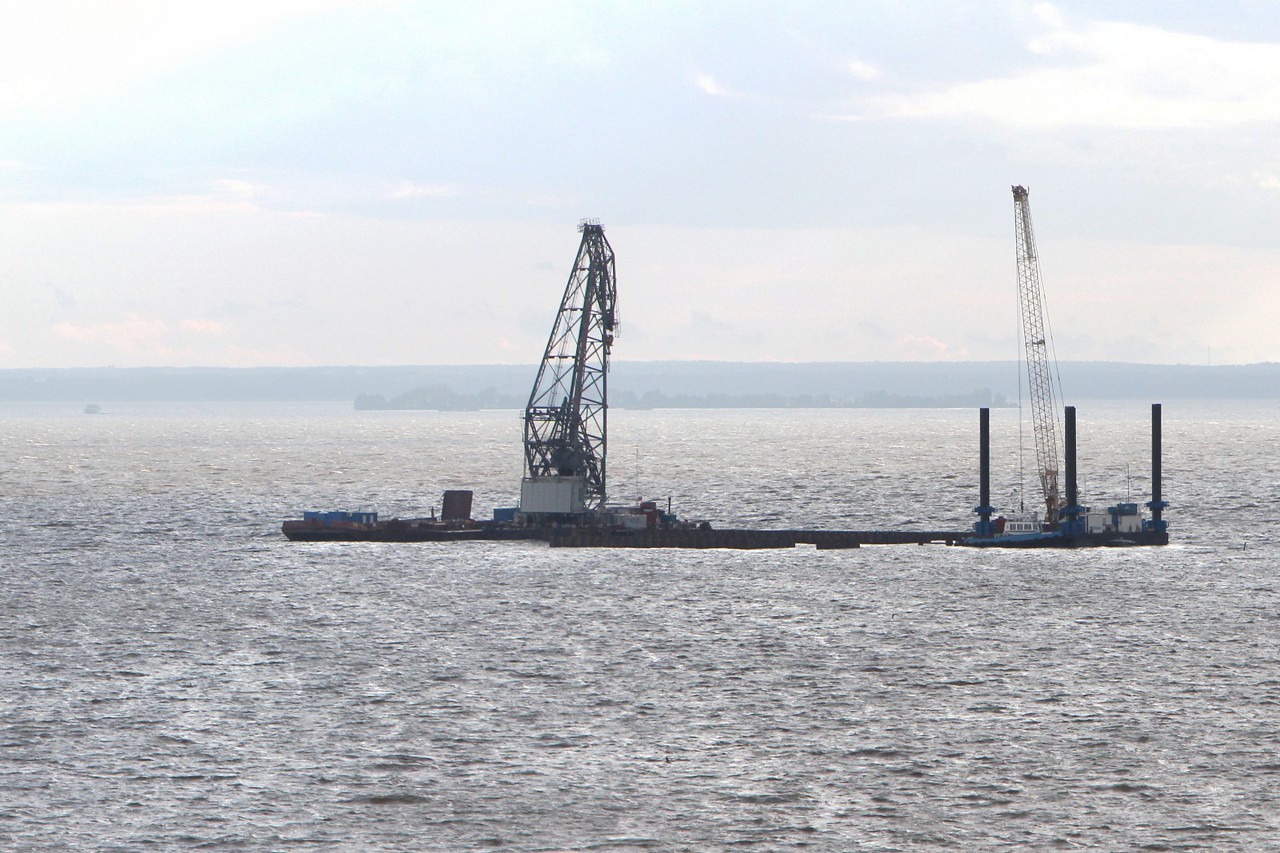
Our ferry arrived at the entrance to the Sea Channel, which you will learn about in the next article.